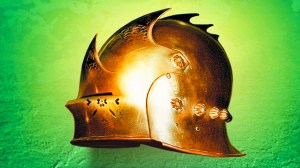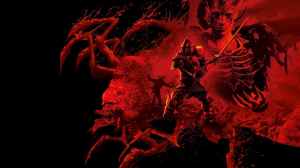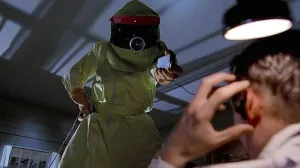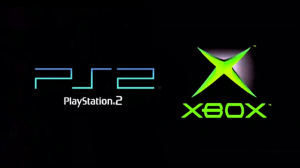Earlier this week, reports emerged that DC Entertainment and Warner Bros. are developing a feature film based on Booster Gold, a disgraced 25th Century athlete who steals some gear and travels back in time to redeem himself as a superhero in the present day.
Videos by ComicBook.com
The film will reportedly team him with his longtime partner Blue Beetle, a character Booster met during their time on the Justice League International in the late ’80s and early ’90s.
As a huge fan of Booster myself, though, and the author of the long-running colum The Gold Exchange, providing interviews, commentary and insight on the character’s exploits since about 2007, these rumors are exciting, and got me to thinking: What do I want to revisit in order to prep for the inevitable onslaught of movie-related stories that I’ll be working on if this project actually gets greenlit and announced?
And as I started to list them off, it seemed like a good thing to share with our readers…!
(Thanks to J.M. DeMatteis, Booster Grey and everyone else who helped me brainstorm.)
SHOWDOWN
Probably the most interesting villain Booster has ever had all to himself was Broderick, a cop from the 25th Century who, incensed by Michael Jon Carter’s crimes against humanity (that’s how they designate messing with a time machine, for obvious reasons) and sense of entitlement, committed himself obsessively to bringing Booster to justice.
Eventually he followed Booster back to the past and sought to kill him for his crimes — something he failed to do for an unlikely reason that left him questioning everything he’d done up to that point.
The story of Broderick unfolded from Booster Gold #14 to #18 in the original volume, collected in Showcase Presents Booster Gold. During that run, there weren’t many multi-part stories that were as clearly defined as the one where Booster, ailing and needing advanced medical treatment, briefly went home only to find himself at odds with the law.
Broderick is the definition of that old adage that every villain is the hero of his own story: Broderick might, by many reasonable measures, even be the hero of THIS story. Except that it’s Booster’s.
KOOEY KOOEY KOOEY
Whether or not you love Keith Giffen and J.M. DeMatteis’s Justice League International run, which established Booster’s long-time friendship with Blue Beetle and set the pair up as the Laurel and Hardy of the superhero set, the story of Kooey Kooey Kooey is probably more representative of the complete run than any other.
Beetle and Booster took the League’s money and invested it in a can’t-fail venture: a tropical island casino. Their logic was that the League would be set for life, and the pair could have free vacations forever as a side benefit.
Unfortunately, the island turned out to be alive. Without spoiling too much, nothing went as planned and this became a touchstone moment when other heroes would treat Beetle and Booster like pariahs for years after.
There were a number of great stories during the Giffen/DeMatteis years that entered on Beetle and Booster, but this one is the most iconic, and arguably the most fully realized since monthly comics didn’t have the same regimented arc structure back then that they do now. Later on, the Giffen/DeMatteis take on these characters would be revisited in Formerly Known as the Justice League, I Can’t Believe It’s Not the Justice League and now Justice League 3000/3001. I’d recommend any or all of those stories, too.
THE GREATEST STORY NEVER TOLD
Despite his long history with the Justice League and a cast that spanned nearly the entirety of the DC Universe during its run, “The Greatest Story Never Told” was the only time Booster Gold ever took the spotlight during the Justice League/Justice League Unlimited animated series.
Written by Andrew Kreisberg, who would go on to serve as a showrunner on Arrow, Supergirl, Legends of Tomorrow and The Flash, the episode blended the humor of the Giffen/DeMatteis era of the Justice League with what has ultimately become the core of Booster’s being: he may want glory, but he wants to be a hero more, and if it comes down to choosing, he chooses “hero” every time.
52
The Booster Gold: Time Master part of the story launched here, with Skeets — Booster’s constant companion and robot sidekick, who routinely used to tell him about crises before they happened so that Booster could both save the day and notify the press — starting to malfunction and Rip Hunter informing the pair that time was “broken.”
Mystery, betrayal, death, rebirth and more followed, with Booster proving the most important piece to arguably DC’s best event book since Crisis on Infinite Earths.
Any more than that would spoil it. If you’ve read 52, you know it belongs on this list…and if you haven’t, READ IT.
Countdown to Infinite Crisis, which introduced a more heartfelt and less silly Booster to the DC Universe for the first time in years and showed him lose his best friend at the hands of a longtime ally, gets an honorable mention here. Without it, it’s arguable that neither his role in 52 nor anything that came after would have been as powerful.
JOHNS AND JURGENS

During the first year of Booster Gold‘s second volume, writers Geoff Johns and Jeff Katz would team with artist Dan Jurgens to create one of the best superhero comics on the market.
The first two stories — 52 Pick-Up, a follow-up to 52, and Blue and Gold, which answered the long-lingering question of why a time-traveler like Booster couldn’t just save his best friend — were masterfully told and paced, introduced powerful new threats for Booster and the rest of the DC Universe and set up a status quo that would allow Jurgens and a complement of other creators to create a great book month-in and month-out for another thirty-plus issues.
Blue and Gold in particular had emotional punch, while 52 Pick-Up deftly blended the new “time cop” Booster Gold with the original “Corporate Crusader” and even the Bwa-ha-ha years by establishing that he wanted to be mocked and underestimated, as it helped his cover.
Special mention has to go to Booster Gold #5, an issue so heartbreaking it’s actually painful to read, but which establishes the ground rules for the series in a brutally effective way and also sets up one of Booster’s most interesting relationships of the post-52 era: his secret friendship with Batman.
BOOSTER
The first-ever live-action take on Booster Gold was surprisingly good.
Often cited as a high point of the final season of Smallville, Booster turned out to be key to showing Clark just how important he was going to be in the future — and, of course, giving him some crazy notion about wearing a cape.
It’s heavily influenced by the original volume of Booster Gold, with no hints that he’s a Time Master or anything, rather than a time-traveling “corporate crusader,” so it was oddly-timed (and a strange creative choice by 52 and Booster Gold: 52 Pick-Up writer Geoff Johns), but still managed to hit every note and deliver a believable, enjoyable take on the character.
THE TOMORROW MEMORY
After a disagrement with his twin sister Michelle (Goldstar), she stormed off into the timestream to clear her head. Unfortunately for her, she ended up in Coast City, shortly after the Death of Superman, and being from the far future, she didn’t realize just how dangerous that was.
Booster found her in the nick of time — but the pair of technology-driven heroes ended up squaring off with the Cyborg Superman…and Michelle was once again heartbroken by a loss she suffered during the fight which Time Masters Rip Hunter and Booster Gold couldn’t let her fix.
A great, character-driven story, this wrapped Booster Gold creator Dan Jurgens’ run on the monthly Booster Gold comic more or less forever; he would go off to work on Time Masters: Vanishing Point and then return briefly for what amounted to a Flashpoint: Booster Gold miniseries that just happened to take place in the pages of Booster’s monthly series.
JUSTICE LEAGUE: GENERATION LOST
When Blue Beetle’s murderer, Maxwell Lord, was resurrected during the Blackest Night storyline, he managed to convince the world he never existed at all.
The world, that is, except for a group of heroes, most of whom used to be a part of Booster’s Justice League. The team rallied together to stop Max, with Booster proving to be the team leader and a key element of the success not only of the comic, but of the team as well.
While the Giffen/DeMatteis era is often dismissed as “too silly,” even those critics wouldn’t levy such an accusation against Judd Winick’s brilliantly-executed take on those stories.
TIME MASTERS: VANISHING POINT
Cited as a major influence on the forthcoming TV series DC’s Legends of Tomorrow, Booster Gold teams with his son Rip Hunter, as well as A-list Justice Leaguers Green Lantern and Superman to square off against a number of threats in the timestream while searching for a time-lost Batman.
The events of this miniseries tied into Flashpoint and actually gave Dan Jurgens and Norm Rapmund a best-selling miniseries event to work on while Keith Giffen and J.M. DeMatteis took one last pre-Flashpoint crack at Booster and Blue Beetle over on the regular monthly Booster Gold title.
This story helps to establish some of the rules that Booster operates under as a Time Master and shows him working on a level playing field with top-tier heroes…which would be blowing his cover, if he weren’t doing it while bouncing through time with no witnesses.
…Or are there?
DOOMSDAY WARS
To many uninitiated fans introduced to the DC Universe by the best-selling The Death of Superman storyline, Booster Gold was primarily that guy whose secret weakness turned out to be car doors and who gave Doomsday his name.
If you stuck around with Justice League America after Superman died, you got to see a lot of what makes Booster work as a character: he’s a technology-based hero, but even after his technology failed catastrophically, he was determined to make himself a useful part of the team — and to sit by Blue Beetle’s side as his old Super Buddy fought for his life in a coma.
After naming the beast, and nearly dying at his hands, Booster’s relationship with Doomsday was always complex, as seen in Superman: Day of Doom, in which a reporter interviewed Beetle and Booster about the day Superman died.
The universe-reshaping event Flashpoint didn’t actually take place in the DC Universe proper and none of DC’s books moved to the Flashpoint universe…except Booster Gold. With Jurgens returning to the title, Booster ended up battling with Doomsday in the Flashpoint universe, then eventually returns to the “regular” DC Universe…but not until after Pandora had reconstructed it, creating the New 52.
Read as a kind of through-line, Booster’s connection to Doomsday is a strange and fascinating one, and all in all it’s worth tracking down the various necessary back issues to get the full experience.
CONVERGENCE
As they were with Flashpoint, the rules were a little different for Booster Gold in Convergence than they were for everybody else. The Booster from the pre-Flashpoint universe showed up and, with Rip Hunter and Skeets, recruited the New 52 version of Booster to his cause: they needed to rescue all of the DC Universe’s time-travelers from the clutches of Deimos.
And they needed to do it before Booster Classic — drenched in decades of accumulated chronal energy from unprotected time travel — died.
Along for the ride, unsurprisingly, was Ted Kord, picked up in the Zero Hour universe. The group managed to not only accomplish their mission but to save the pre–Flashpoint Booster, who won the day in the main Convergence series as the newly-reconsituted Waverider.



















